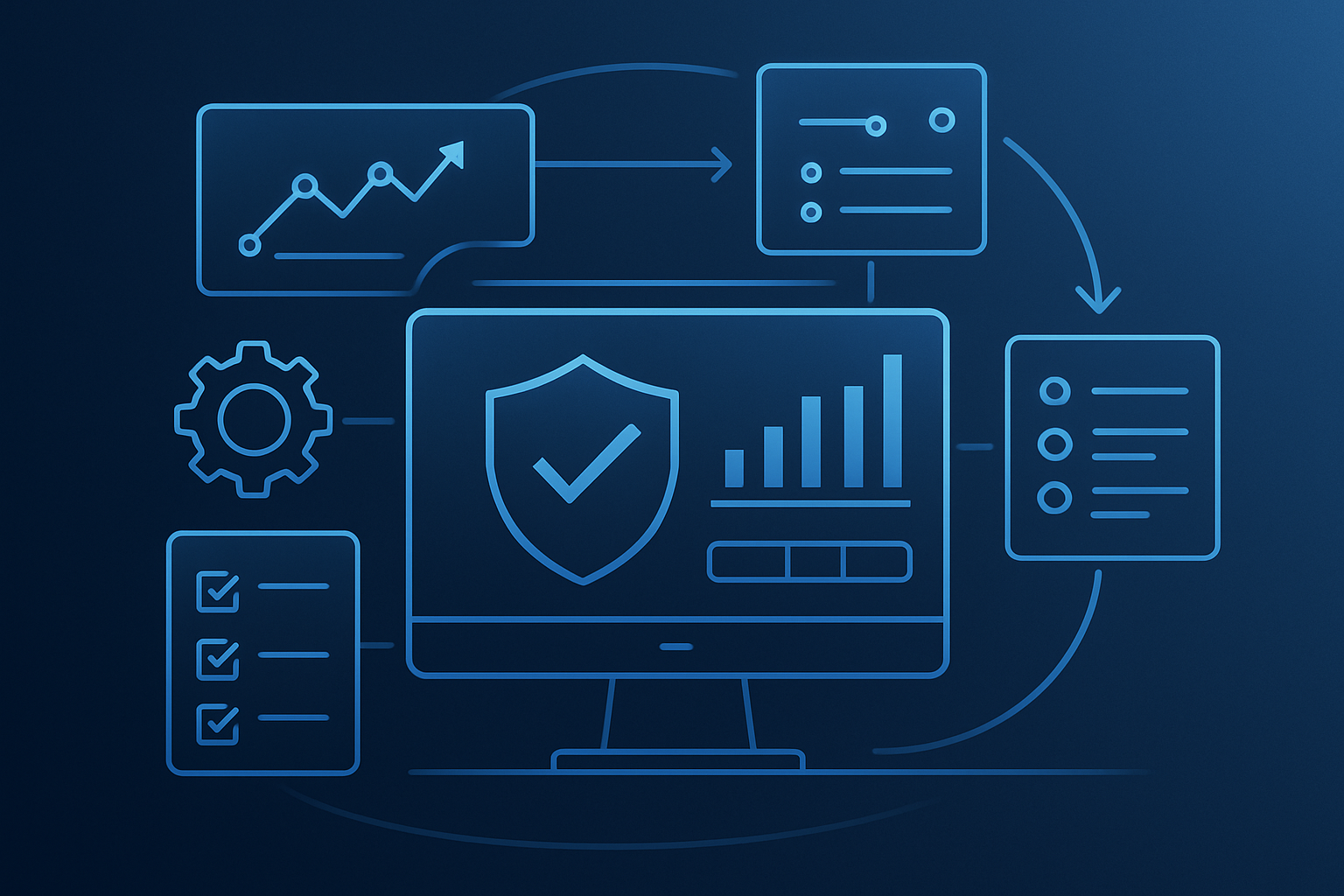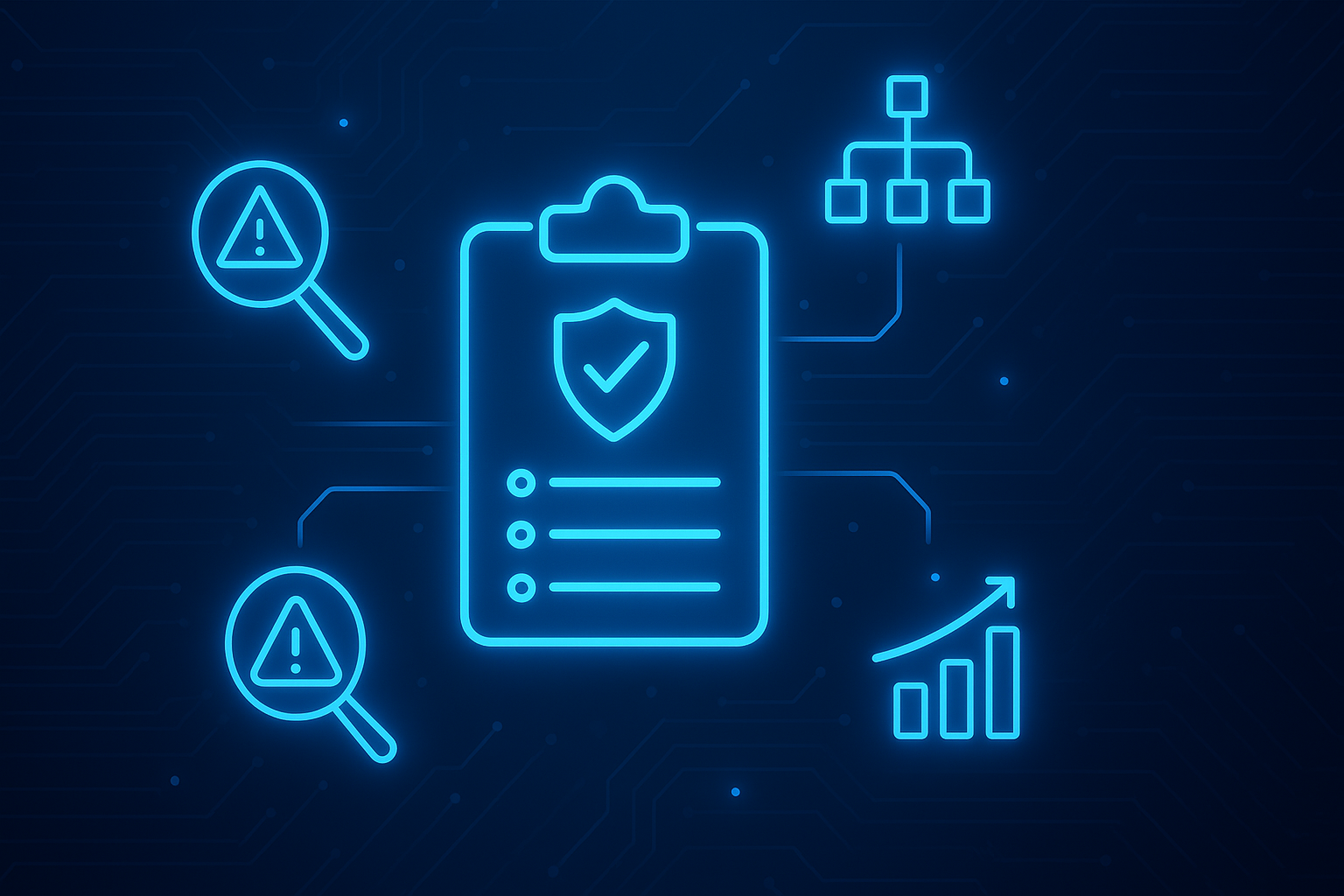Risk registers are a widespread utility among many cybersecurity professionals that allow practitioners to track and measure business risks in one place. This type of reporting can quickly help align your teams to the initiatives that matter and save valuable resources, time, and labor. By utilizing compliance, scope, and efficacy, any project team can utilize a risk register to better risk management in cybersecurity.
Examples of Cybersecurity Risk Registers
Creating a register might seem easy using a generic project plan risk register template found online, but properly managing risk, identifying potential impact, and conducting cyber risk assessments can be difficult. Deciding what goes into a risk register depends on your organization’s cybersecurity posture, potential, residual, and identified risks. Security teams typically use risk registers to identify potential risk events, with the likelihood, impact, and description of an event to track the risk. A separate record should accompany this inventory to log control deficiencies that can contribute to the risks included in your risk register. Coordinating with stakeholders, project managers, and other personnel in your company is necessary for accurately scaling and reviewing the risk log in your register. However, using a risk register alone proves nothing towards compliance if not accompanied by a cyber risk management plan to continuously monitor and track your compliance initiatives.
What Should be Included in a Risk Register?
Your risk register should include:
| Included in the risk register | |
| Risk Description | Describe the measured risk and how it threatens the organization. |
| Cause | The event or trigger that causes the risk to happen. |
| Result or Impact | The impact your organization faces if the risk occurs. |
| Likelihood | How probable is the risk of this happening to your company? |
| Outcome | How detrimental the risk can be if it happens. |
| Risk Level | How high of a priority is the risk based on your risk matrix? |
| Cost | The expense to mitigate the risk or minimize its impact as much as possible. |
| Mitigation Actions | The actions the security team carried out toward risk mitigation. |
Using a cyber risk management solution responsible for managing risk continuously, risk registers function more as a method for reporting amongst team members than actively proving compliance. As a static form of reporting, there’s potential room for error and impact on a risk response plan if a risk register is not supplemented by continuous compliance. A cybersecurity risk register can help delegate across cybersecurity risk management, track risk owners, improve risk identification, streamline cyber risk analysis, prioritize your response and action plans, and risk response based on high-, medium-, or low-risk categories.
Many cyber risk management frameworks and standards today require risk registers as a supplementary way of proving your organization is effectively executing its risk management processes in tandem with a continuous solution. By utilizing a proactive cyber risk management solution, you can monitor and control gaps across many frameworks, potential project risk information across an enterprise, and measure your cybersecurity posture.
Template of Cybersecurity Risk Register
| Risk | Cause | Impact | Likelihood | Outcome | Risk Level | Cost | Mitigation Plan |
| Credential Compromise | Phishing Email | 120 Hours | Medium | Loss of organizational accounts to bad actors | Medium | 100 Hours | Organizational emails with phishing detection software |
| Data Leaks | Personal internet usage on a work device | 300 Hours | Low | Unauthorized access to CUI | High | 50 Hours | Restrict access to web content unnecessary to the function of the organization |
| Mobile Media Data Protection | Removable digital media is not backed up | 250 Hours | High | Loss of data and company assets | High | 120 Hours | Log and report on all mobile media, who has access, and their content |
| Cloud Vendor Network Compromised | The vendor uses unencrypted cloud communication | 100 Hours | Low | CUI sent and received from the vendor is compromised | Low | 50 Hours | Creation of an encrypted cloud network of vendors |
Risk Registers play a critical role in organizing data for cyber risk quantification.
Getting ready to evaluate CRQ vendors? Download our research brief on what to look for in cyber risk quantification software.
Cybersecurity Risk Register
Creating and maintaining a risk register can be automated and streamlined using CyberStrong’s patented AI for cyber risk quantification and saving your organization valuable time, labor, and resources. If you have questions about creating a risk register or how CyberStrong can help automate your cyber risk management strategy, request a demo.





.png)
.png)
.png)
%201.png)
.png)




